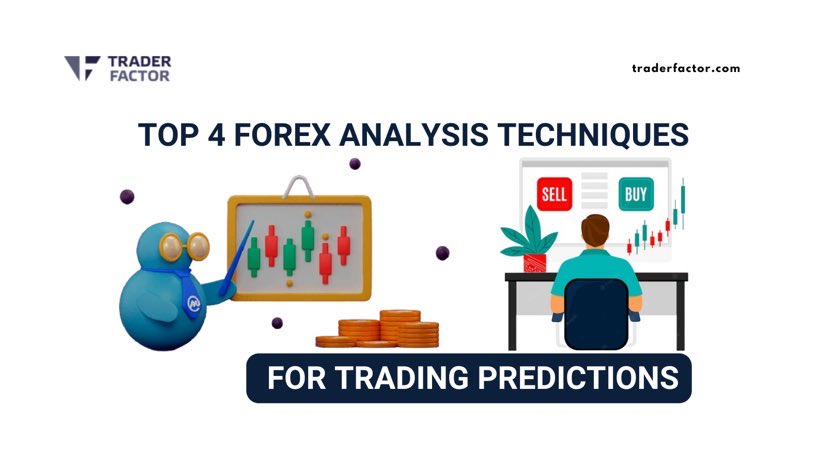Are you struggling to predict the future of forex trading? Look no further!
In this article, we will explore the top 4 forex analysis techniques that will help you make accurate trading predictions.
- Technical analysis
- Fundamental analysis
- Sentiment analysis
- Intermarket analysis
With these techniques at your fingertips, you’ll have the tools you need to stay ahead of the game.
Say goodbye to guesswork and start trading with confidence today!
Key Takeaways
- Technical analysis is a method of analyzing price movements and patterns in the forex market, providing objective and quantifiable information.
- Fundamental analysis focuses on underlying factors that influence currency value, such as economic indicators, central bank policies, and geopolitical events.
- Sentiment analysis considers the emotions and opinions of market participants, helping traders make more informed trading decisions.
- Intermarket analysis studies relationships and correlations between financial markets, such as the stock market, bond market, and commodity market, to gain insights into potential currency movements.

Technical Analysis
You should regularly use technical analysis in your forex trading strategy to make accurate predictions. Technical analysis is a method of analyzing price movements and patterns in the forex market to identify potential trading opportunities. By studying historical price data, charts, and indicators, you can gain insights into the market’s behavior and make informed decisions.
This analysis involves examining trends, support and resistance levels, and various technical indicators such as moving averages, oscillators, and Fibonacci retracements.
One of the key benefits of technical analysis is its ability to provide you with objective and quantifiable information. Unlike fundamental analysis, which relies on subjective factors such as economic news and geopolitical events, technical analysis focuses solely on price action. This makes it a valuable tool for traders who prefer a more systematic and rule-based approach.
Another advantage of technical analysis is its versatility. It can be applied to various timeframes, from short-term intraday trading to long-term position trading. Whether you’re a day trader or a swing trader, technical analysis can help you identify entry and exit points, manage risk, and maximize profits.
In conclusion, incorporating technical analysis into your forex trading strategy is essential for making accurate predictions. By analyzing price patterns, trends, and indicators, you can gain a deeper understanding of market dynamics and increase your chances of success.

Fundamental Analysis
As you delve deeper into your forex trading strategy, it’s important to complement your technical analysis with fundamental analysis. While technical analysis focuses on charts, patterns, and historical data, fundamental analysis delves into the underlying factors that influence the value of a currency.
Here are four key aspects of fundamental analysis that can help you make more informed trading predictions:
- Economic Indicators: Keep an eye on economic indicators such as GDP growth, inflation rates, interest rates, and employment data. These indicators provide insights into a country’s economic health and can impact currency values.
- Central Bank Policies: Monetary policies set by central banks, such as interest rate decisions and quantitative easing programs, can significantly impact currency values. Stay updated on central bank announcements and press conferences to anticipate market movements.
- Geopolitical Events: Political stability, trade agreements, and geopolitical tensions can have a profound impact on currency values. Monitor international news and events to identify potential opportunities or risks.
- Market Sentiment: Pay attention to market sentiment and investor confidence, as they can greatly influence currency movements. Factors such as risk appetite, market trends, and sentiment indicators can help you gauge market sentiment.

Sentiment Analysis
To further enhance your trading predictions, complement your fundamental analysis with sentiment analysis. While fundamental analysis focuses on economic indicators and news events, sentiment analysis considers the emotions and opinions of market participants.
By understanding the sentiment in the market, you can gain valuable insights into how traders feel about a particular currency pair, which can help you make more informed trading decisions.
One way to gauge sentiment is by monitoring economic indicators and news releases for surprises. Positive surprises can create a bullish sentiment, while negative surprises can lead to a bearish sentiment. Another method is to analyze social media and news sentiment. By monitoring platforms like Twitter and news articles, you can get a sense of how people are talking about a currency pair.
To further illustrate the importance of sentiment analysis, consider the following table:
| Currency Pair | Fundamental Analysis | Sentiment Analysis |
|---|---|---|
| EUR/USD | Positive | Neutral |
| GBP/USD | Negative | Bearish |
| USD/JPY | Neutral | Bullish |
| AUD/USD | Positive | Bullish |
| USD/CAD | Negative | Bearish |

Intermarket Analysis
To further enhance your trading predictions, complement your fundamental and sentiment analysis with Intermarket analysis. Intermarket analysis involves studying the relationships and correlations between different financial markets, such as stocks, bonds, commodities, and currencies. By analyzing these relationships, you can gain valuable insights into potential trends and movements in the forex market.
Here are four key aspects of Intermarket analysis to consider:
- Stock Market: The stock market can provide valuable clues about investor sentiment and risk appetite. A strong stock market can be indicative of a healthy economy and could lead to increased demand for currencies associated with that country.
- Bond Market: The bond market reflects interest rates and inflation expectations. Changes in bond yields can impact currency valuations, as higher yields attract foreign investors seeking better returns.
- Commodity Market: Commodity prices, such as oil and gold, can have a significant influence on currency values. For example, a rise in oil prices can lead to higher inflation and put pressure on the currencies of countries that are net importers of oil.
- Global Economic Indicators: Monitoring global economic indicators, such as GDP growth, employment data, and consumer confidence, can provide insights into the overall health of the global economy and potential currency movements.

Frequently Asked Questions
What Are the Advantages and Disadvantages of Using Technical Analysis in Forex Trading?
Using technical analysis in forex trading has advantages like identifying trends and entry/exit points, but it also has disadvantages such as reliance on historical data and the inability to predict sudden market changes.
How Can Fundamental Analysis Help in Predicting Long-term Trends in the Forex Market?
Fundamental analysis helps you predict long-term trends in the forex market by analyzing economic indicators, news events, and geopolitical factors. It provides a deeper understanding of market conditions and helps you make informed trading decisions.
What Role Does Market Sentiment Play in Forex Trading and How Can It Be Measured?
Market sentiment is crucial in forex trading. It reflects the overall attitude of traders towards a currency. You can measure it through tools like sentiment indicators, surveys, and news analysis.
Can Intermarket Analysis Be Used to Identify Potential Correlations Between Different Asset Classes and Currencies?
Yes, Intermarket analysis can help you identify potential correlations between different asset classes and currencies. By studying how one market affects another, you can make more informed trading decisions.
How Do Geopolitical Events and Economic Indicators Impact Forex Trading Decisions?
Geopolitical events and economic indicators heavily impact forex trading decisions. Stay updated on global news and economic reports. Analyze how these factors influence currency values and make informed trading choices.

Conclusion
In conclusion, utilizing a combination of technical analysis, fundamental analysis, sentiment analysis, and intermarket analysis can greatly enhance your forex trading predictions.
By studying charts, economic indicators, market sentiment, and the relationship between different markets, you can make more informed decisions and increase your chances of success in the forex market.
So, make sure to incorporate these analysis techniques into your trading strategy to stay ahead of the game.
Author
-

Zahari Rangelov is an experienced professional Forex trader and trading mentor with knowledge in technical and fundamental analysis, medium-term trading strategies, risk management and diversification. He has been involved in the foreign exchange markets since 2005, when he opened his first live account in 2007. Currently, Zahari is the Head of Sales & Business Development at TraderFactor's London branch. He provides lectures during webinars and seminars for traders on topics such as; Psychology of market participants’ moods, Investments & speculation with different financial instruments and Automated Expert Advisors & signal providers. Zahari’s success lies in his application of research-backed techniques and practices that have helped him become a successful forex trader, a mentor to many traders, and a respected authority figure within the trading community.
View all posts













